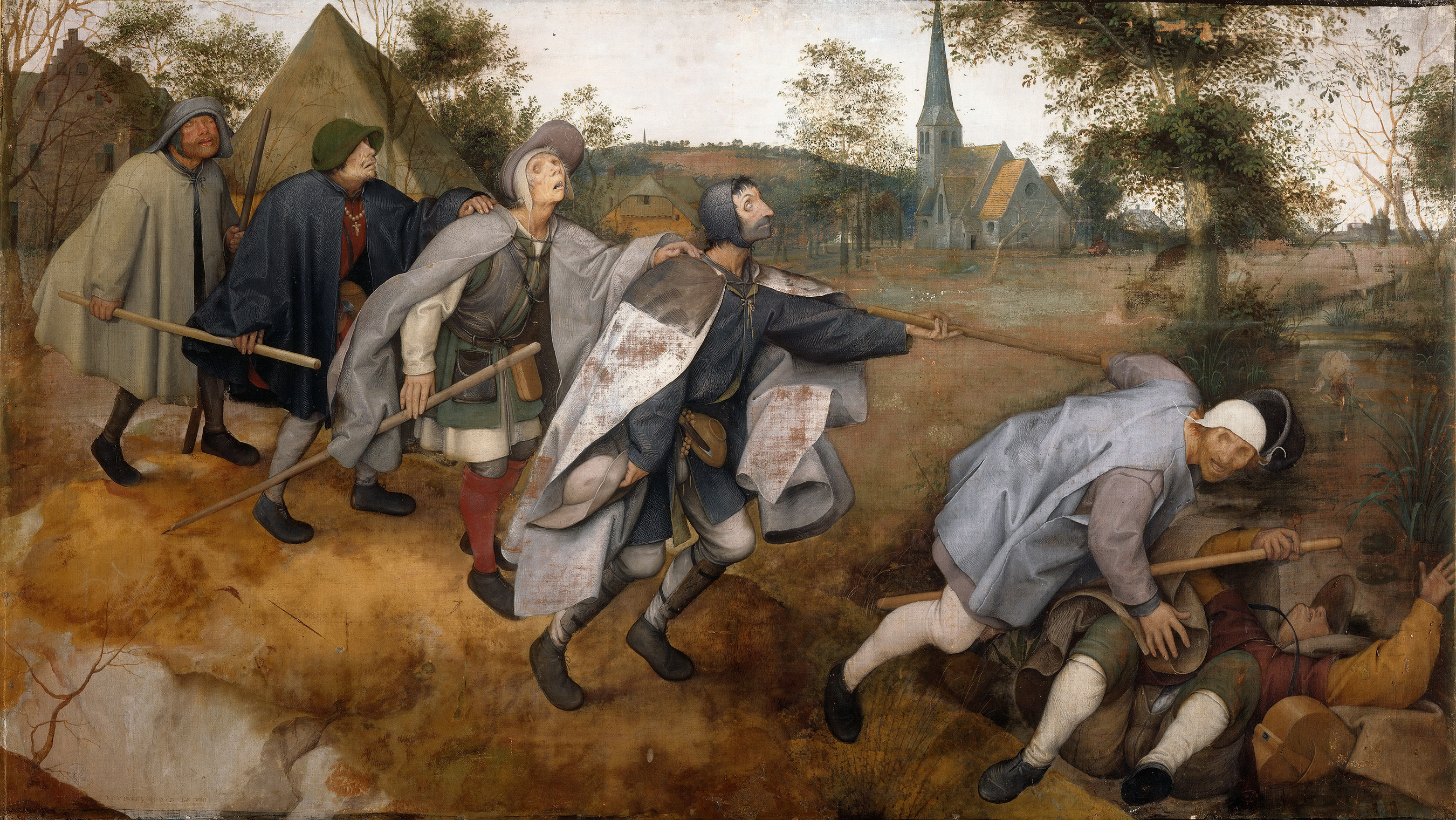
The Blind Leading the Blind is an adaptation of Christ’s parable saying that when the blind lead the blind, they shall fall into a ditch (Matt. 15:14; Lk. 6:39). This painting perfectly symbolizes the dilemma we face in data analysis—when we are “blinded” by cognitive biases and statistical fallacies, we not only mislead ourselves but also those who rely on our judgments.
Blind decisions lead to blind outcomes.
I decided to compile a Statistical Fallacies Map covering 54 common pitfalls—to remind myself and any reader who happens to come across this article.
Core issue: The judgments and decisions we make every day often rely on statistical information and seemingly reasonable inferences. But the foundation of those inferences—the “premises” in our thinking—is frequently riddled with biases and traps.
Why Care About Statistical Fallacies?
As an engineer, I’m used to letting data speak. But while designing a mental-health app, I realized something surprising: even trained professionals can make poor judgments due to cognitive blind spots.
Have you ever changed your mind because of a seemingly convincing statistic? Or felt confused by data, unsure how to evaluate credibility?
Understanding these traps isn’t about becoming cynical—it’s about becoming a better consumer of data. Like learning common bug patterns in programming, recognizing cognitive traps helps us write more robust “thinking code.”
A Structured Understanding of Thinking
During this exploration, I gradually formed a mental framework:
Structured understanding of thinking:
- Point: information, concepts, observations, hypotheses
- Line: logical links—causality, mathematical operations, comparisons
- Cluster: related points and lines forming cognitive groupings
- Reasoning: interactions between clusters that produce new understanding or direction
- Conclusion: the result after reasoning
As a formula: Premise [point or cluster] → Reasoning method [cluster] → Conclusion [point or cluster]
A Complete Map of 54 Traps
I built a classification system that covers 54 statistical fallacies—like drawing a “cognitive trap map”:
Measurement Bias Zone (9 traps)
The most common type of traps, including:
- Survivorship bias (only seeing successful cases)
- Measurement error (the measurement method itself is flawed)
- Sample selection bias
Sampling Bias Zone (4 traps)
Focused on the fundamental question of whether the sample is representative. In A/B tests, the test cohort may not represent your entire user base.
Selective Reporting Zone (4 traps)
Particularly insidious traps—not about the data itself, but about “which data we choose to present”:
- Cherry-picking (reporting only favorable results)
- Confirmation bias (seeking only evidence that supports your view)
Cognitive Bias Zone (4 traps)
Systematic errors deeply rooted in human psychology, arising from how our brains process information.
Aggregated Data Traps Zone (3 traps)
Most famous is “Simpson’s Paradox”—aggregated data can lead to conclusions that are the exact opposite of subgroup analyses.
Causal Inference Traps Zone (3 traps)
“Correlation does not imply causation,” temporal order issues, confounding variables, etc.
Probability Judgment Traps Zone (3 traps)
Base-rate fallacy, gambler’s fallacy, and others that deceive our intuition about probability.
Other Specialized Zones (19 traps)
Regression fallacy, Hawthorne effect, publication bias, and other domain-specific pitfalls.
Writing Plan: Deep-Dive Series
I broke this large project into a series of articles, combining personal experience with real cases:
Writing Method
Each article will follow this structure:
- Start with a real story or personal experience
- Explain the essence and mechanism of the fallacy
- Bilingual terminology (Chinese–English)
- Practical ways to recognize and avoid it in daily life
- Applications in technical domains
Series Roadmap
Phase 1: Foundational Traps
- Measurement Bias — Nine landmines hidden during data collection
- Sampling Bias — Four fatal problems in choosing samples
- Selective Reporting — Four forms of invisible manipulation in presenting information
Phase 2: Cognitive Level
4. Cognitive Bias — Four systematic “bugs” of the human mind
5. Probability Judgment — Three common mistakes in probabilistic intuition
Phase 3: Advanced Analysis
6. Aggregated Data — Three classic traps in data aggregation
7. Causal Inference — Three major pitfalls in causal reasoning
Phase 4: Specialized Domains
8. Specialized Domains — Nineteen important traps from specific fields
Personal Insights: From Product Design to Self-Awareness
While compiling these 54 fallacies, I realized that even with a technical background, I’ve fallen into many of them:
In product design:
- Survivorship bias: focusing only on feedback from successful users
- Confirmation bias: collecting only data that supports the design
- Sampling bias: drawing wrong conclusions about user behavior
In personal decisions:
- Confusing correlation with causation
- Anchoring effect: constrained by the initial framing of information
These realizations were both humbling and exciting. Humbling because they reveal the limits of our thinking; exciting because they offer concrete ways to improve the quality of our thinking.
Writing Goal: Build a Better Thinking Framework
Learning these cognitive traps isn’t meant to make us doubt everything. It’s to help us become insightful thinkers about data. Recognizing fallacies and biases can make your thinking more resilient and less prone to manipulation.
If this series helps you examine your own reasoning process, re-evaluate assumptions you once took for granted, and avoid the traps your own brain sets at critical moments—then I’ve achieved my goal.
Looking Forward to Exploring Together
The upcoming series will be a deep exploration of thinking. Each fallacy represents a “bug” in human cognition. Understanding these bugs is key to building a better thinking model.
Through these articles, I hope you will:
- See your own premises clearly: identify assumptions and biases hidden in the subconscious
- Optimize your reasoning process: connect information and concepts more effectively
- Make better decisions: whether career choices, investments, or life planning
Next time you face a complex decision, pause and ask: “What are my premises? Does my reasoning have holes? Are there other possibilities?”
Next up: “Foundational Traps Series: Measurement Bias” is coming soon.

